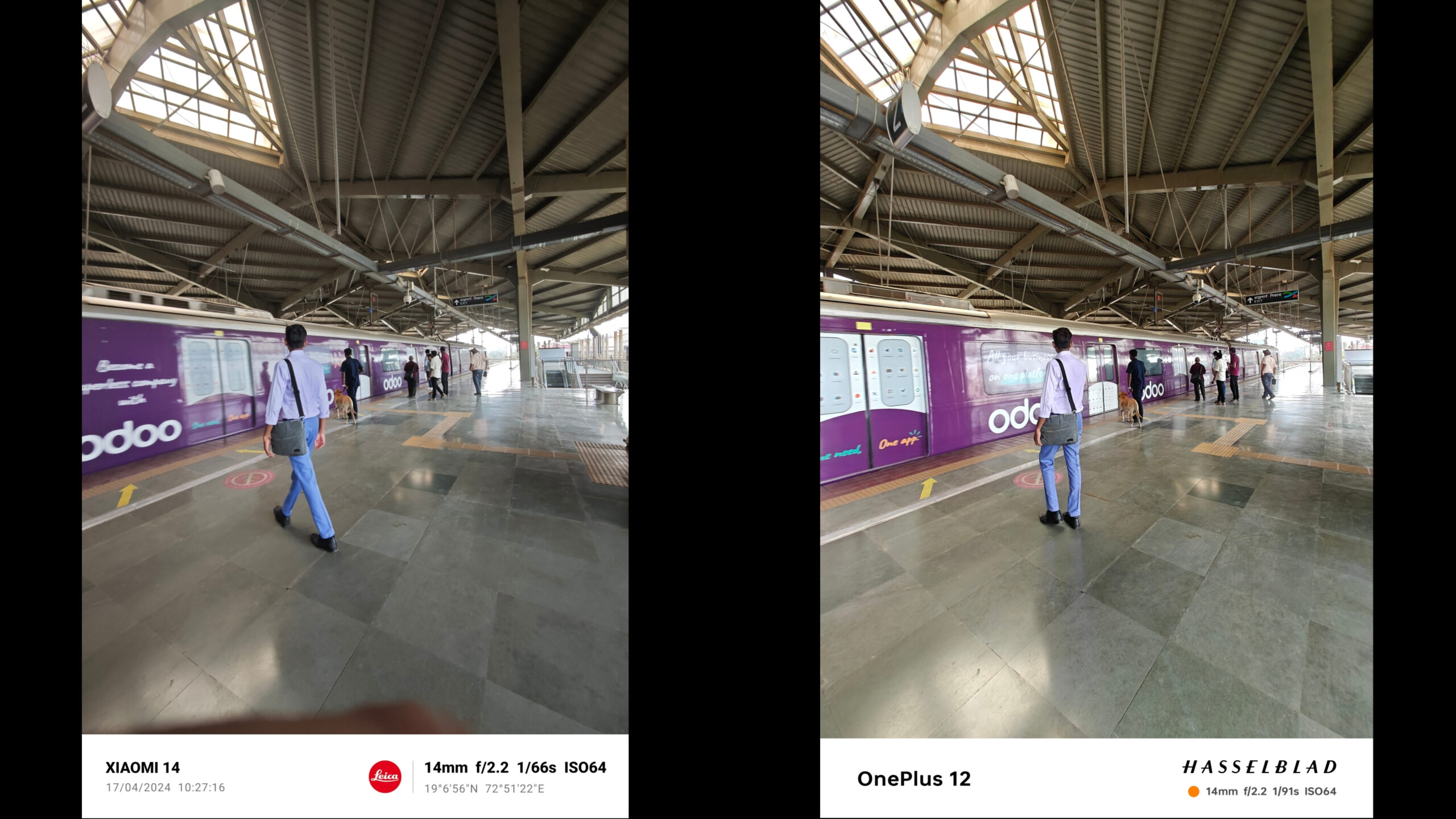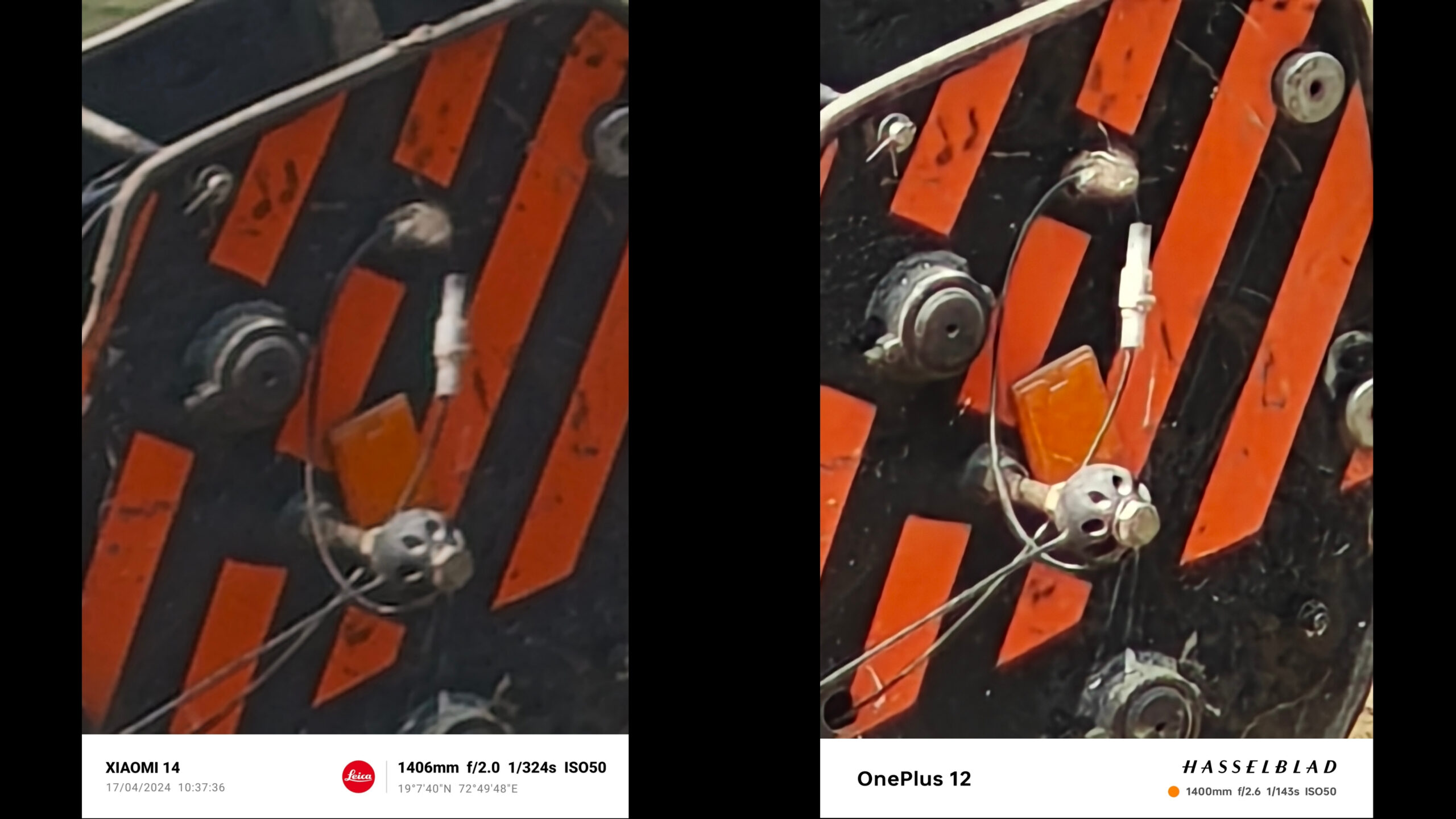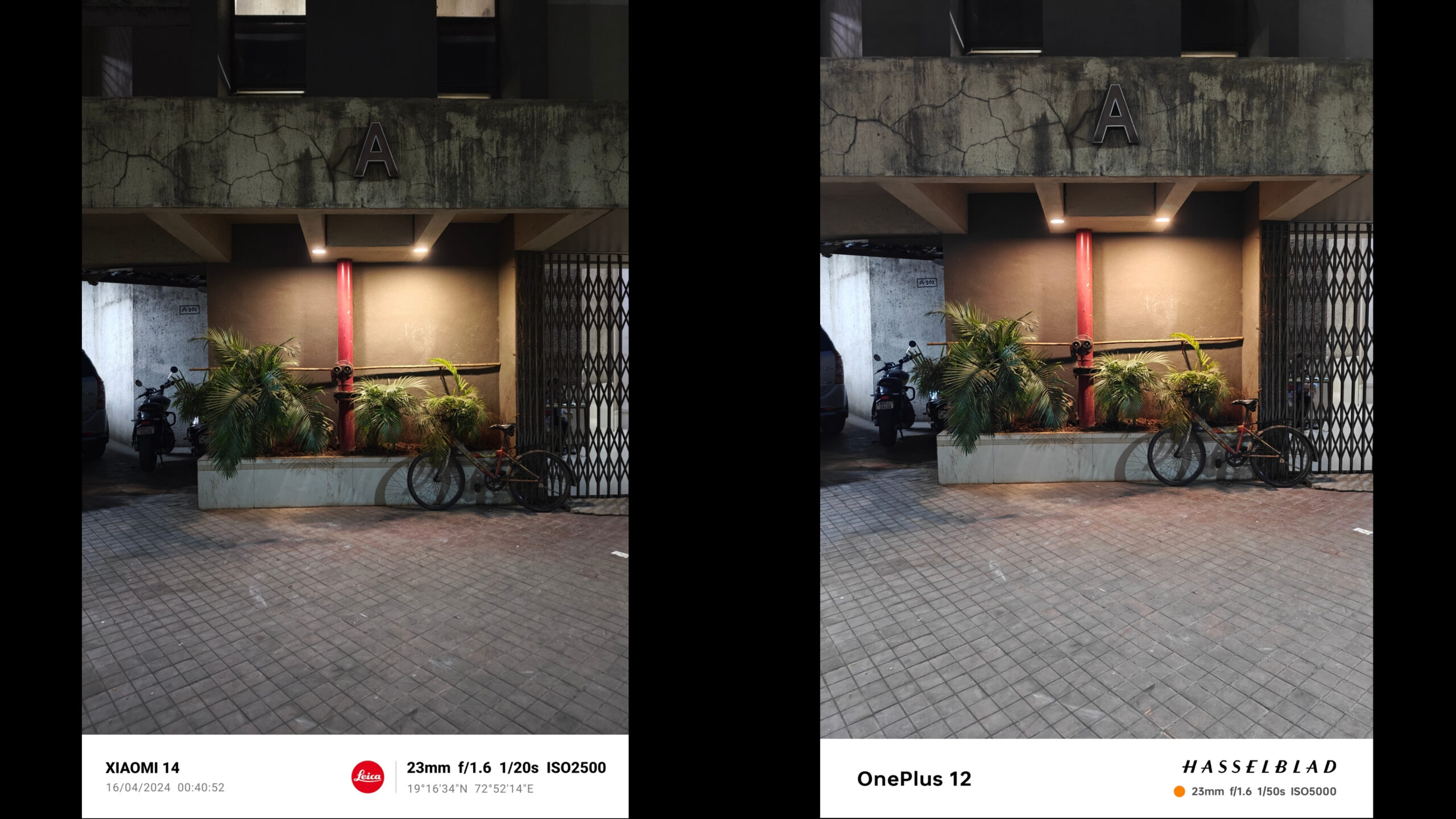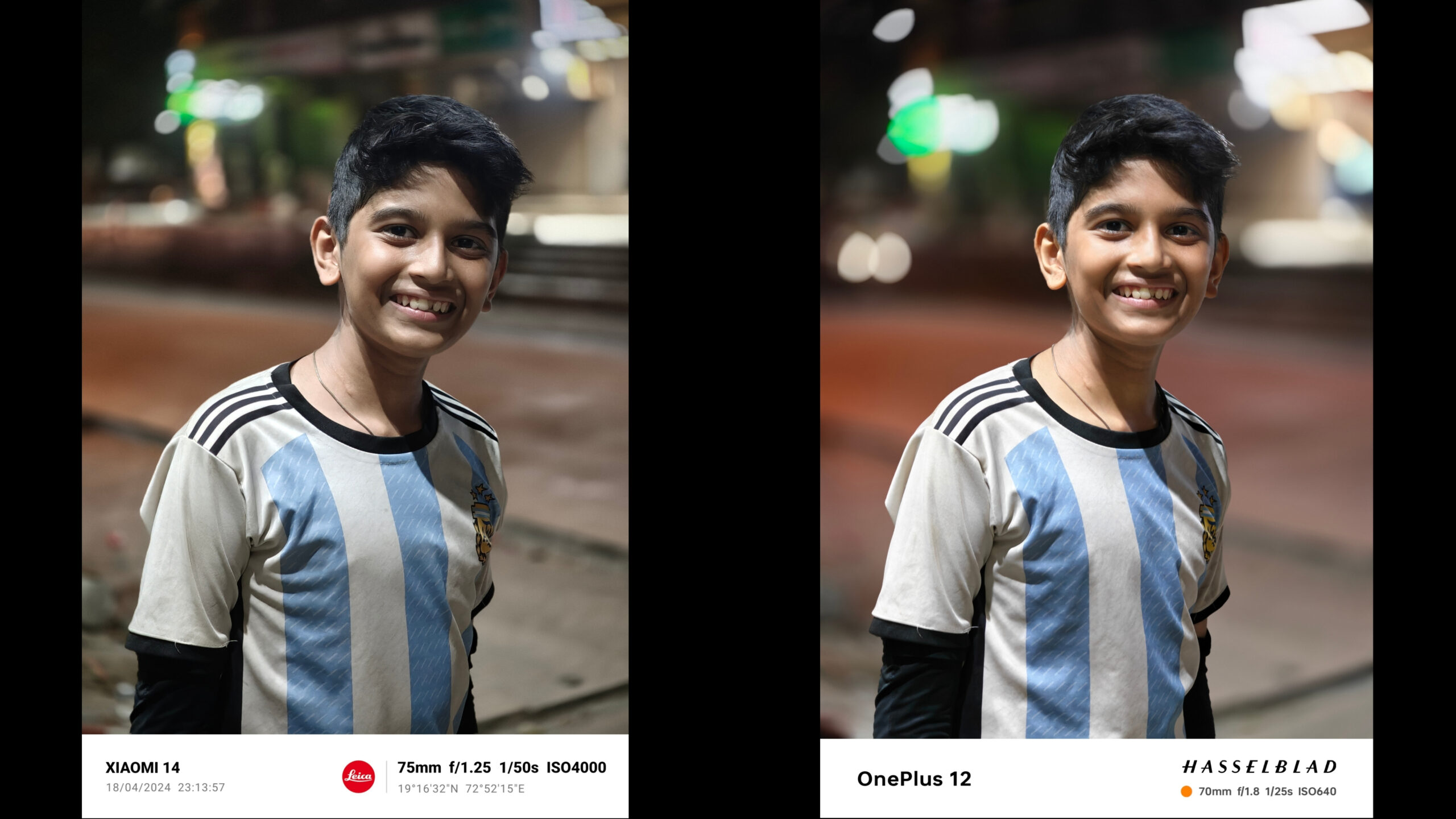In this review we are comparing the cameras of the OnePlus Nord CE 4 vs Vivo V30e cameras. Both of these phones come in very interesting price category, between ₹25,000 – 28,000. Now this is a very competitive market and also something that users tend to use a lot. Both these phones are the best variants that the manufacturers offer, 8GB RAM and a 256GB capacity which is expandable to 1TB using an external card. The OnePlus is more affordable of the two coming in with a price of ₹27,000, while the Vivo is for ₹30,000.
Camera Set up
At the back both these come with a dual camera set up which are identical, they both feature a 50-MP main camera and an 8-MP ultrawide camera set up. But there are two major differences between them, one the front camera of the Vivo is also a 50 MP camera while the OnePlus is at 16 MP and the other is that the Nord 4 CE is powered by the Snapdragon 7 Gen 1 while the Vivo is powered by the 6 Gen 1 processor. Now to the naked eye this might not seem much, but the processor can make a big difference to the performance of the phones, both in the cameras as well as the overall performance.
Both these are powered by the Android 14 with the layer of Oxygen and Funtouch OS.
Daylight Main Camera
A quick look at the sensors of the camera tells us that both manufactures have used different sensors, the OnePlus uses the Sony Lytia 600 sensor which we have now seen on the Open as well as the 12. While the Vivo uses the Sony IMX 882.
In terms of pics, for a camera which offers 50 MP the performance from both of them is ok. The Vivo in some cases boosts the saturation than the actual scene and giving out more reddish tinge to it. On the other hand, the OP was able to give the output as per the original scene. And because of this compensation, the vivo also boosts the contrast of the image leading to the shadow and highlights being blown out. On zooming in as well the images from the OP are sharper than the Vivo.

We put the phones in a challenging shooting scene with harsh light to see multiple things and in this case as well the Vivo was over saturating the pics and also blowing out some details. If you see the wire in this pic then it has blown out coz of the over compensation. I liked the performance of the OP in this case since it didn’t blow out the sky and made it appear bluish which was slightly dull in the Vivo.

But in cases where you are looking for a better saturation and poppy colours then the Vivo would come out on top with the images looking more pleasing to the eye. Although the flare performance could be better.
Daylight Wide
The wide camera of both the phones comes in at 8 MP and its isn’t the best resolution that you get today. But in this price bracket I don’t think the manufacturers can give you much more either.

The images from both of them are ok. The Vivo again displays signs of over saturation but the performance of the flaring is pretty good in this case, much better than OP. But closer to the actual scene, the OP is able to deliver it much better, the Vivo in this case consistently displayed a yellowish or reddish tinge in most cases. I also found the distortion performance of the OP much better.
Daylight Telephoto
In the telephoto category both the phones allow the user to click upto 2x and then shift to digital zoom of 10x for the Vivo and 20x for the OP.



In this case the performance of both the phones up to 2 to 3x is decent. Anything beyond that I wouldn’t expect a lot. To the naked eye, the OP appears to be sharper on zooming in, but there is hardly any difference between the two honestly. What works for the Vivo in this case is the saturation compensation for vivo which makes some images appear more sharper and pleasing to the eye.
But overall, for zoom purposes and also at high focal ranges the OP is much sharper than the Vivo.
Lowlight Main
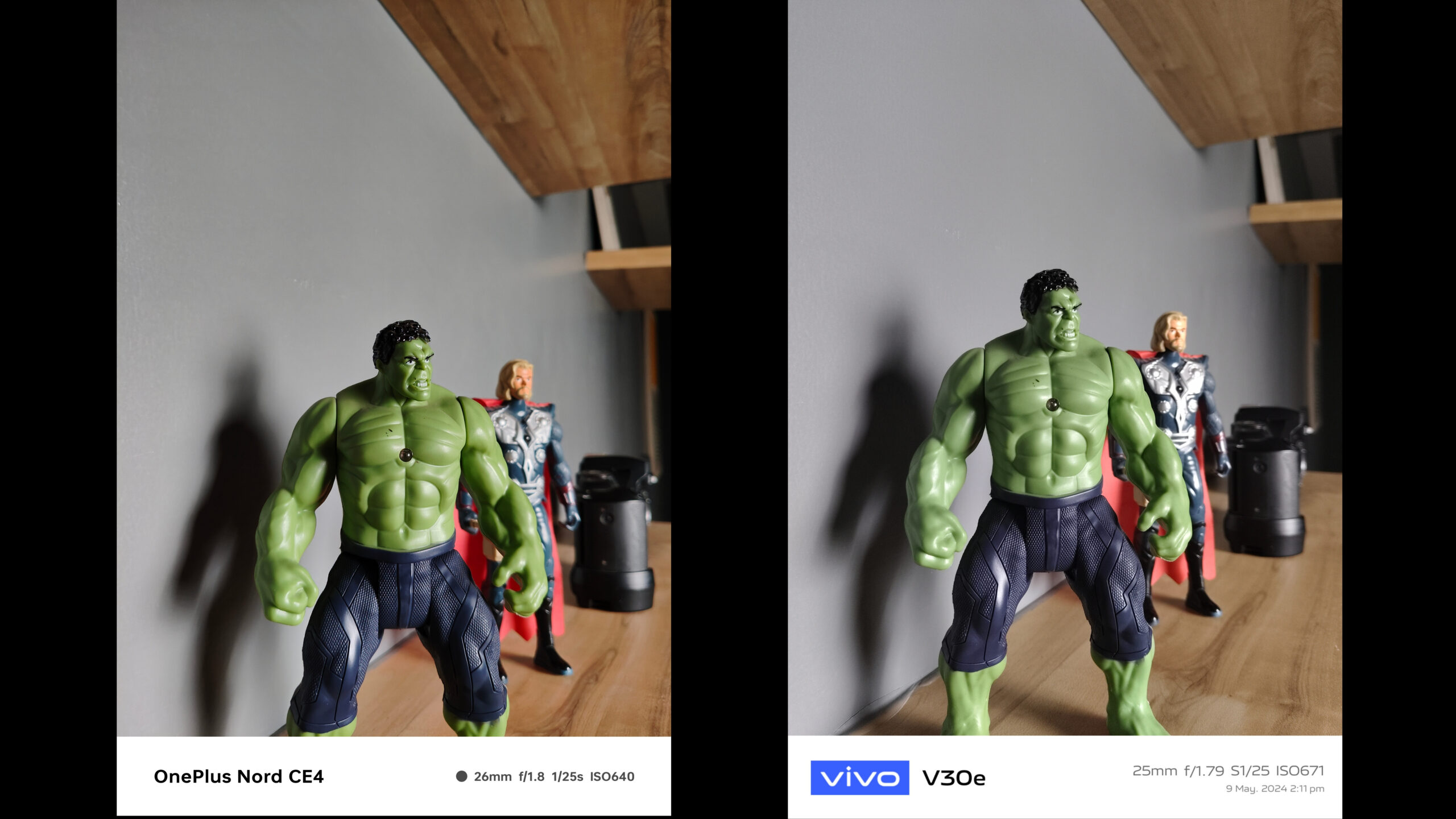
In lowlight, the main camera of the OP is again much better giving better sharpness and more saturation as well. The overall image from the Vivo appears to have some sort of a haze due to which the images aren’t looking sharp or saturated. Even on zooming in you can find more details in the pics from the OP. Overall the OP does seem to show a lot more clarity, saturation and also true to scene pics in this case.
Lowlight Wide

And this performance continues in the wide category as well. The Vivo gives a slight reddish tinge to the images while the OP gives a slight yellowing tinge in some cases under ambient light. But under more natural conditions the images from the Vivo seem better than the OP. The images do come slightly underexposed in the OP while they seem well lit and saturated in Vivo.
Lowlight Telephoto
Under this category neither of these phones are that great. At best they are passable.
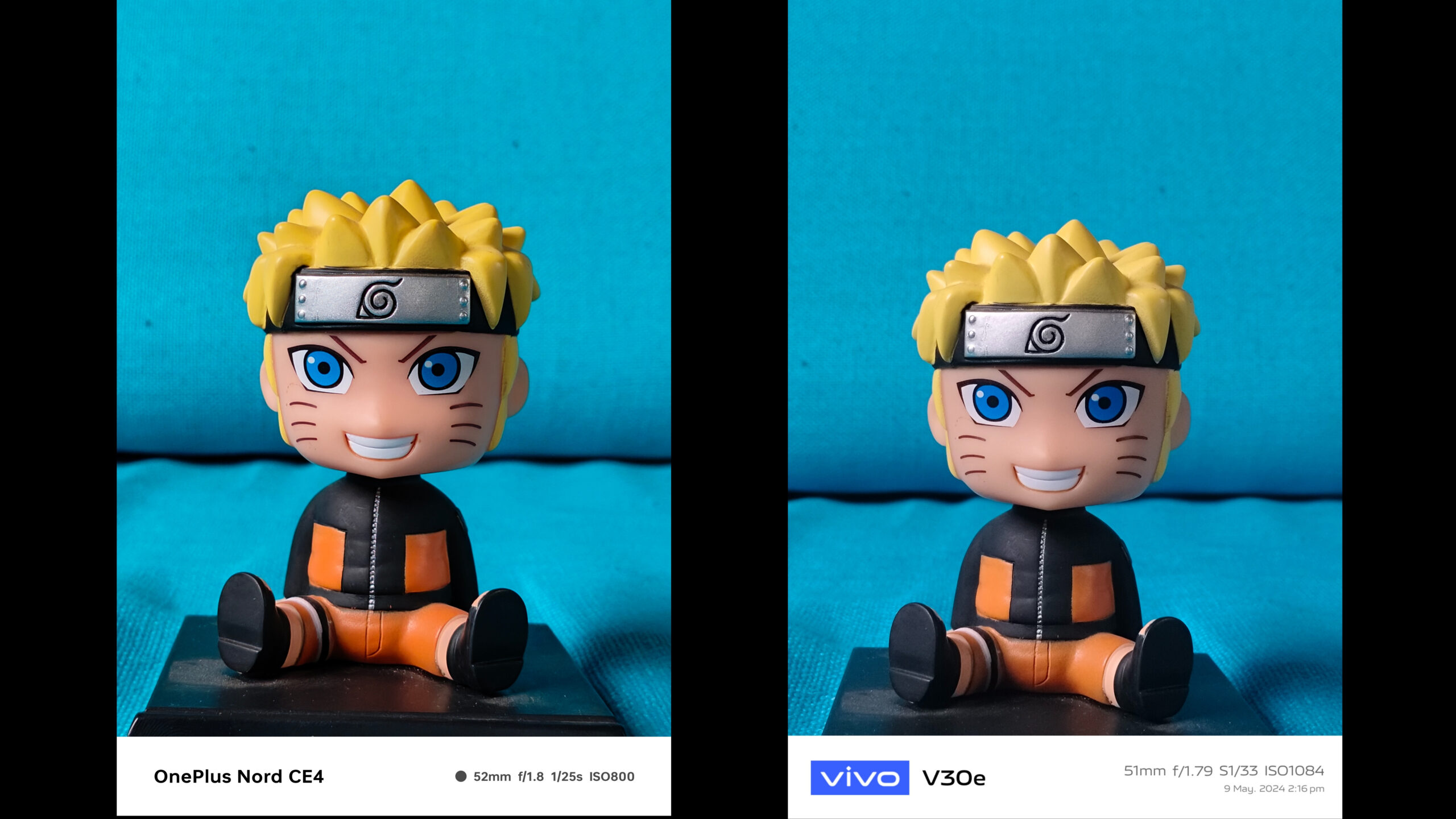
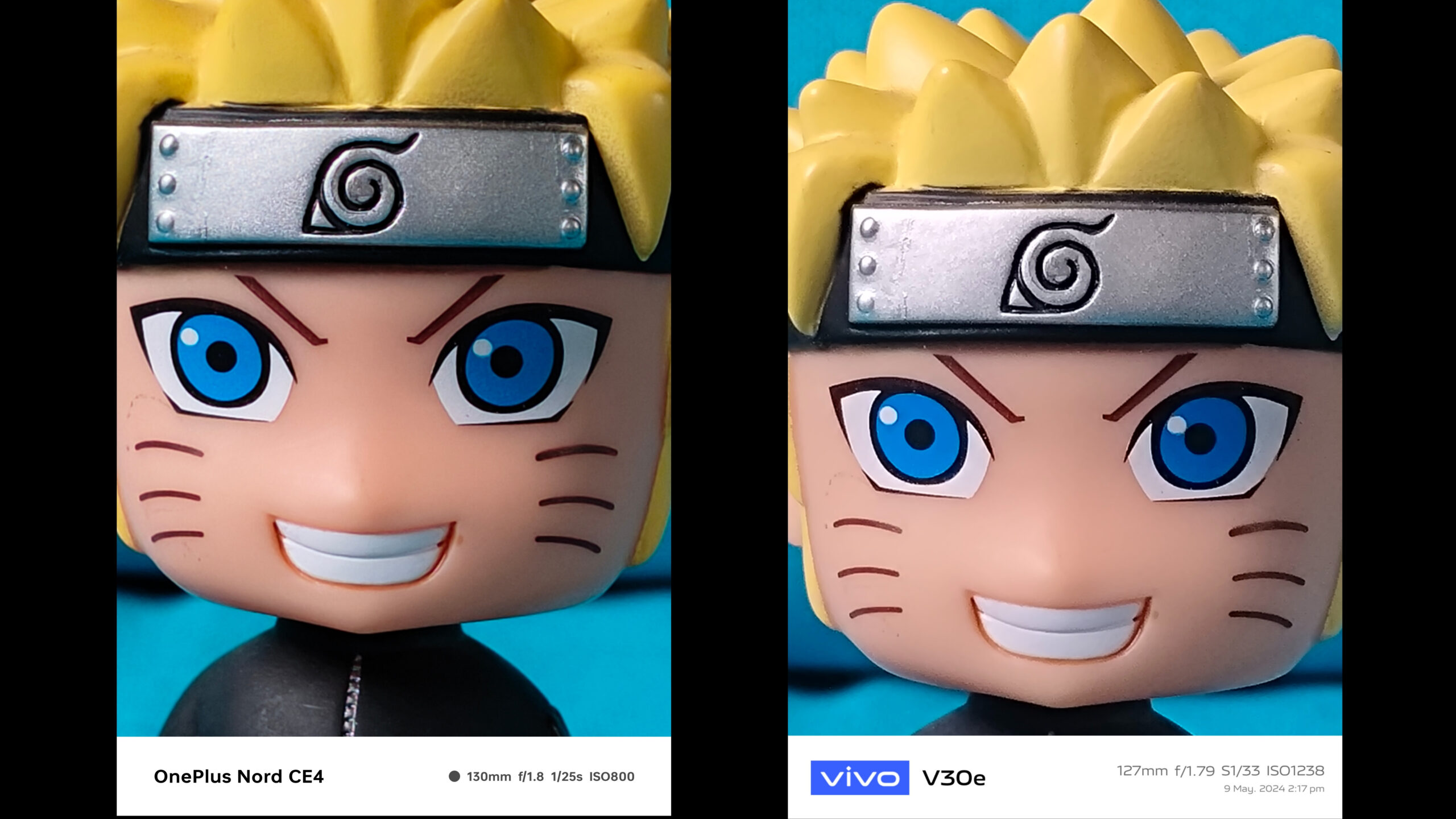
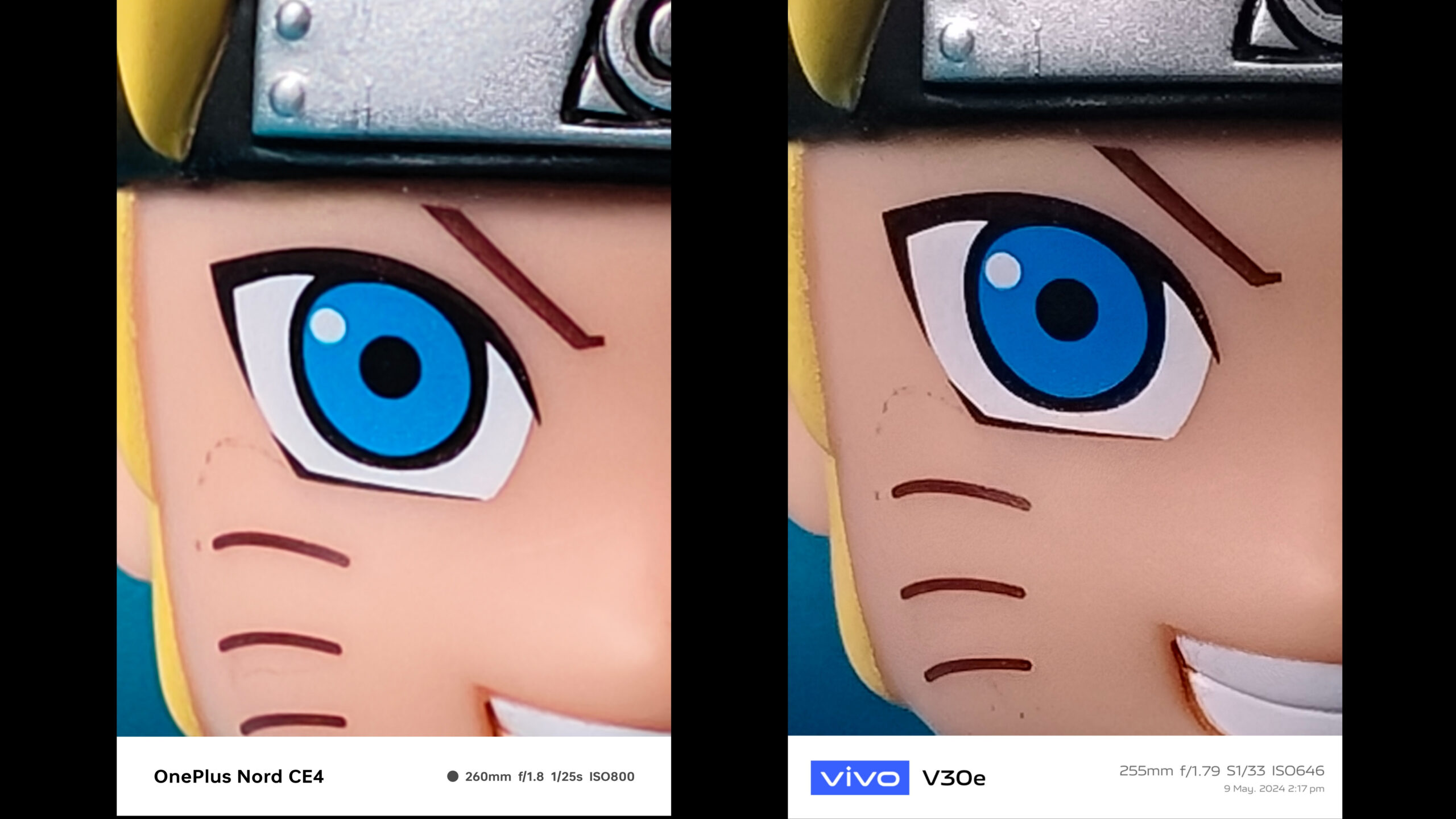
At 2x the OP displays much better shapes and quality but anything beyond that, both the phones start losing sharpness and in my mind images under such conditions can be used much. As you go higher into the focal range the difference seems more apparent. And in this case as well the OP has a much better quality than the Vivo.
Portraits
In terms of portraits the Vivo gives you the option to use the aura light to shoot more warmer portraits if you want. But the images from that are warmer and the fill of the light can be much better. Also, by default the setting for skin smoothening is on for the Vivo so if you are someone who doesn’t like that then you should put it off in settings.
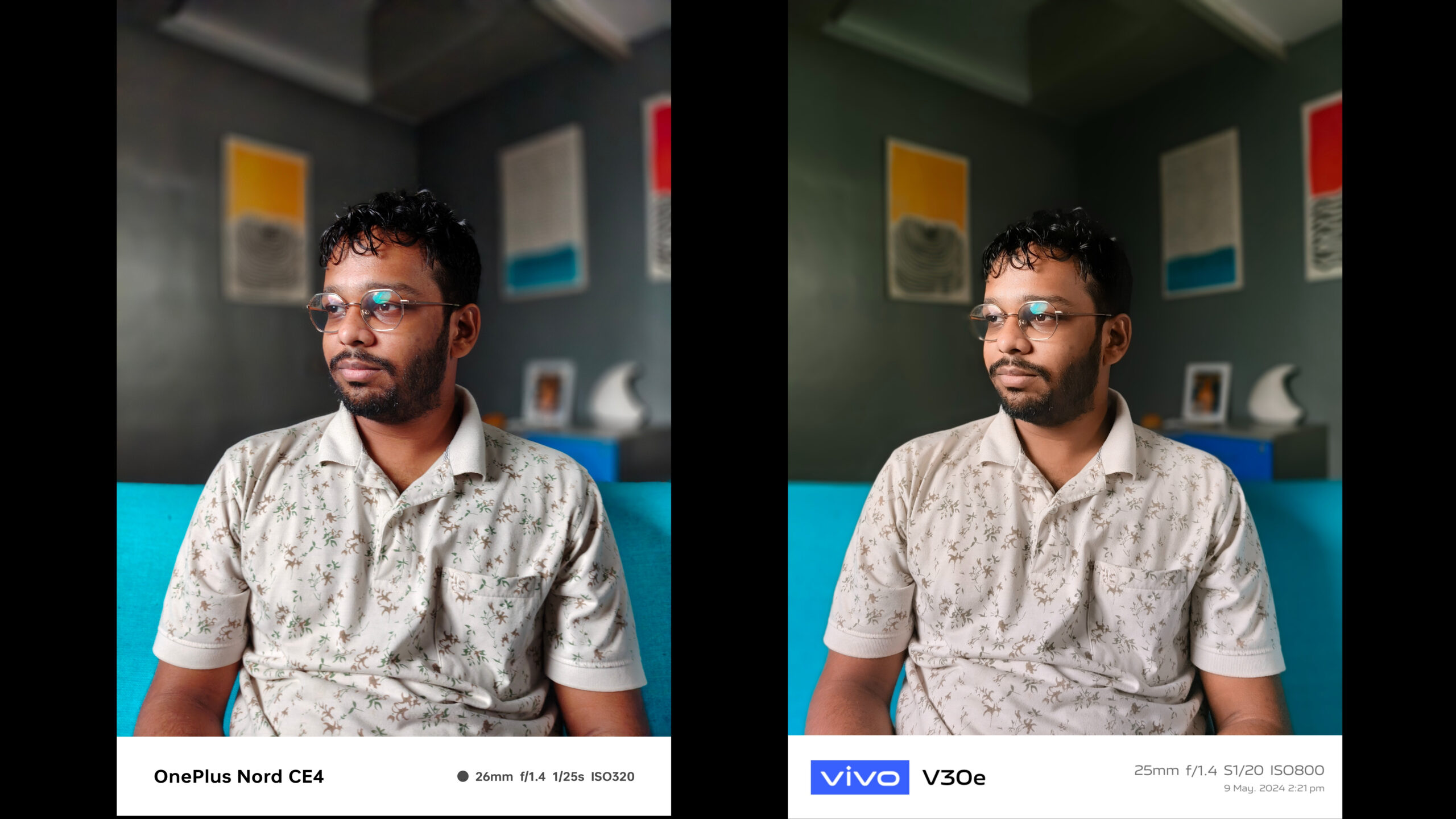
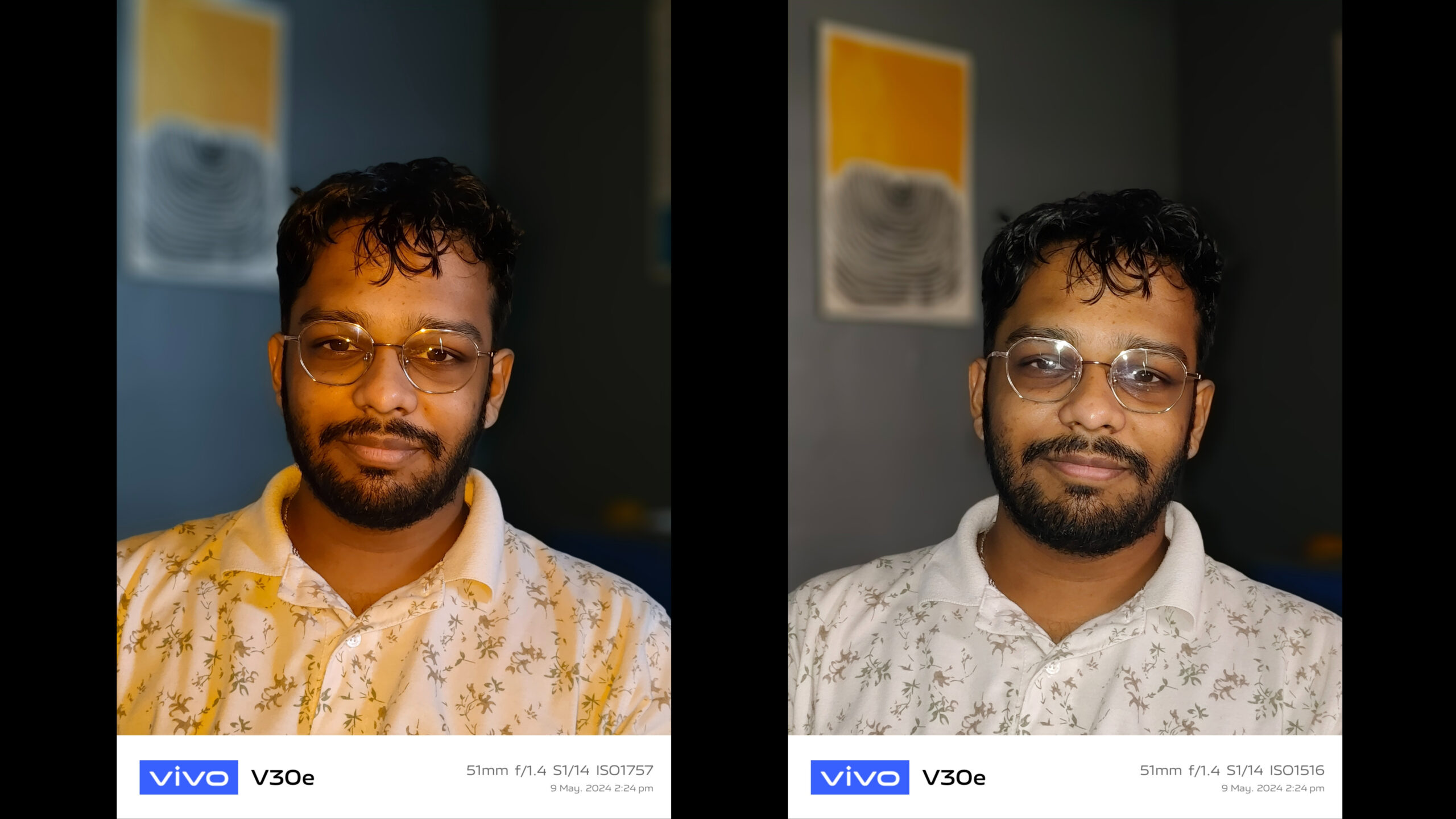
In general, the images from either of the phones are decent. The output is sharp in most cases, but the edge detection could be better. Now with these types of phones I don’t expect them to have excellent output in terms of bokeh and depth, but in this case as well the OP is visibly much better. The depth is more real and better than the Vivo.
Front Camera
The front camera has quite a bit of difference between both of the phones. The vivo has a 50-megapixel camera, whereas the OnePlus has a 16-megapixel camera in terms of resolution, and the Vivo definitely has an advantage in this case on paper.
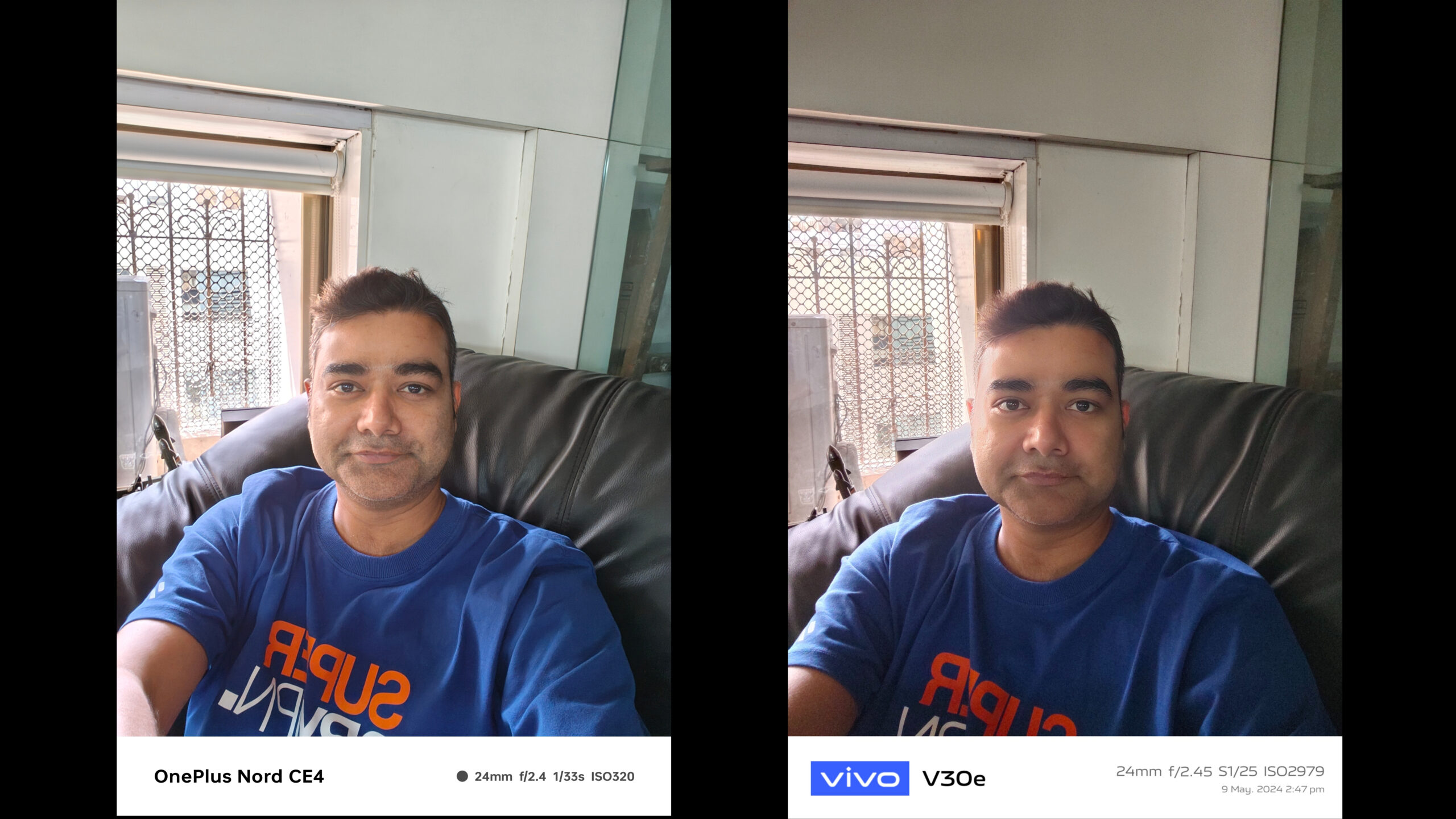
But despite the resolution advantage, the images from the OP are well saturated and good. In terms of portraits as well the pictures from both the phones are decent. The have a decent edge detection, especially in backlight scenarios and can be passed at decent images.
Video
When it comes to Videos, both the phones can shoot 4k upto 60 fps and the output from both of them is good. In daylight there is very little to choose between either of them, but in lowlight the OP seems much better than the Vivo. The stabilisation also works better in the OP as you can see from the samples.
Conclusion
So which phone has the better camera? The OnePlus or the Vivo? They both have something that works well for them, but in this case for me the OnePlus Nord CE 4 is the winner, not only because the camera is better under most conditions, but also since it features a much faster processer, specs and also is more economically priced than the Vivo.
Bhavya Desai


